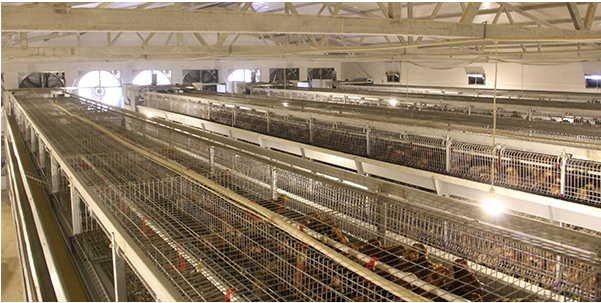The impact of battery cage for layers on farmers’ income in Burkina Faso
- Published in Chicken cages
Burkina Faso is a country located in West Africa, and agriculture is an important part of the country's economy. In recent years, farmers in the country have begun to use battery cage for layers to raise poultry. This breeding method has had a positive impact on farmers' income.
First of all, battery cage for layers in Burkina Faso can improve breeding efficiency. Traditional chicken coop farming methods often require a large amount of land and labor, while stacked chicken cages can raise more poultry on limited land, reducing land and labor requirements. Through the use of battery cages, farmers can improve breeding efficiency and increase poultry production, thereby increasing farmers' income.

Secondly, battery cage for layers in Burkina Faso can reduce breeding costs. The modular design of the battery layer cage allows farmers to freely adjust the number of layers and scale of the battery layer cage as needed, and flexibly respond to changes in breeding needs. In addition, the automated design of chicken cages reduces farmers’ labor and lowers labor costs. By reducing breeding costs, farmers can earn higher profits and increase their income levels.
Finally, battery cage for layers in Burkina Faso can drive rural economic development. The adoption of battery layer cages has promoted the increase of rural employment opportunities and attracted more labor forces to participate in the poultry breeding industry. At the same time, farmers’ increased consumption due to increased income has also driven the development of the rural market. This virtuous cycle promotes the growth of rural economy and improves farmers' income levels.
To sum up, the impact of battery layers cage in Burkina Faso on farmers’ income is to improve breeding efficiency, reduce breeding costs and promote rural economic development. This farming method creates more opportunities and sources of income for farmers, helping to improve their living standards.




